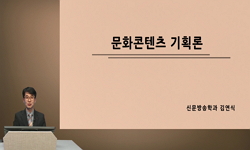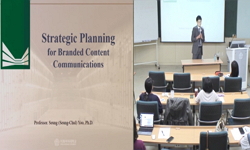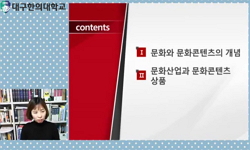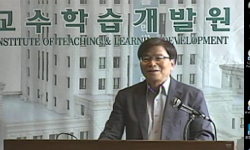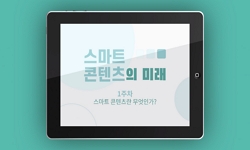The purpose of this study is to develop new content using the historical figure, King Jungjo, whose period left rich cultural heritage. In the 18th century, when Joseon was in a transitional period moving into the modern era, King Jungjo helped to bri...
http://chineseinput.net/에서 pinyin(병음)방식으로 중국어를 변환할 수 있습니다.
변환된 중국어를 복사하여 사용하시면 됩니다.
- 中文 을 입력하시려면 zhongwen을 입력하시고 space를누르시면됩니다.
- 北京 을 입력하시려면 beijing을 입력하시고 space를 누르시면 됩니다.
https://www.riss.kr/link?id=T12741375
- 저자
-
발행사항
서울 : 韓國外國語大學校 大學院, 2012
-
학위논문사항
학위논문(석사)-- 韓國外國語大學校 大學院 : 글로벌문화콘텐츠학과 2012. 2
-
발행연도
2012
-
작성언어
한국어
- 주제어
-
DDC
951.902 판사항(22)
-
발행국(도시)
서울
-
기타서명
(A) study on how to use cultural heritage in content development : focusing on a historical figure, King Jungjo
-
형태사항
84 p. : 삽도 ; 26 cm.
-
일반주기명
한국외국어대학교 논문은 저작권에 의해 보호받습니다.
지도교수: 강진갑.
참고문헌 : p. 77-81 - 소장기관
-
0
상세조회 -
0
다운로드
부가정보
다국어 초록 (Multilingual Abstract)
The purpose of this study is to develop new content using the historical figure, King Jungjo, whose period left rich cultural heritage. In the 18th century, when Joseon was in a transitional period moving into the modern era, King Jungjo helped to bring about Renaissance in the country. Therefore Koreans hold special affection for the King and relatively a large amount of content was developed about him. In addition, since the designation of Suwon Hwaseong Fortress as the World Cultural Heritage Site by UNESCO in 1997, studies on Suwon Hwaseong Fortress and King Jungjo have been actively conducted, which has shed the new light on the King as a representative historical figure for Suwon and Hwaseong areas. However, in terms of content development, King Jungjo has been interpreted as a sage or reformist king only and his image is confined to a historical person in specific areas. It is time to adopt a new approach to discuss King Jungjo’s achievement. As well as his historic accomplishments, King Jungjo needs to be reviewed in a wider range beyond Suwon and Hwaseong to be recognized as one of representatives of Korea.
In Suwon and Hwaseong areas, various pieces of cultural heritage related to King Jungjo are located. In Suwon city, there are historical structures like Hwaseong Fortress, Hwaseong rural palace, Man-seock-geo (Man-made lake for agricultural water located in the north of Hwaseong Fortress), and Chuk-man-je (Man-made lake for agricultural water located in the west of Hwaseong Fortress) and various types of content such as the Hwaseong Museum and Hwaseong Cultural Festival. In Hwaseong city, Yungleung (Tomb of King Jungjo), Gunleung (Tomb of Crown Prince Sado, King Jungjo’s father), and royal Buddihist temple of Yongjoosa are situated and a cultural festival with the theme of King Jungjo’s filial duty is held. Besides, King Junjo’s traces can be found in other areas; Gwunrisa (Royal shrine that the King established) in Osan, Changdeokgung (Palace where the King resided during his reign) in Seoul, and Neunghaengkil (Road that the King took to go to the royal tombs) in Anyang. Therefore, all those cities can be developed into a Jungjo Cultural Belt by clustering neighboring areas.
Furthermore, restoration of Hwaseong haengchagil (Journey of King Jungjo to Hwaseong) is required according to the establishment of the Jungjo Cultural Belt. The restoration would be the foundation to reenact the King’s journey to Hwaseong. Because Hwaseong haengchagil is recorded in 『Wonhaeng eulmyo jeongni uigwe (Record of Jungjo's visit to his father's tomb in the year Eulmyo)』 in detail, the road and the journey are possibly recovered as they were in the past. Now some part of Hwaseong haengchagil is recaptured during the Hwaseong Cultural Festival. However, if the whole road and the journey are revived based on thorough historical research, they will have a high chance to be recognized as Intangible Cultural Heritage by UNESCO as well as Salleung jerye (Memorial ritual) held in Yungleung and Gunleung and 24 sets of martial arts described in Muye dobo tongji (Comprehensive illustrated manual of martial arts).
The time demands development of historical and cultural content that represents Korea. At this juncture, the value of cultural heritage of King Jungjo’s period is remarkable as it depicts the latter part of the Joseon Dynasty. The Jungjo Cultural Belt should be established by clustering areas with the cultural heritage in order to develop various content and programs. Also, symbolic Korean historical and cultural festivals need to be created by restoring intangible heritage. The historical figure, King Jungjo, is familiar to and loved by ordinary Korean people and cultural heritage of his period implicates universal value showing the country’s history and traditional culture. As a result, new content on King Jungjo as a model historical figure of Korea will be used as a representative Korean brand.
국문 초록 (Abstract)
본 연구는 정조를 활용한 새로운 콘텐츠 개발에 관한 것으로, 풍부한 역사문화자원을 가지고 있는 역사인물 정조를 활용한 새로운 콘텐츠 개발을 목적으로 한다. 전통시대에서 근대로 넘어...
본 연구는 정조를 활용한 새로운 콘텐츠 개발에 관한 것으로, 풍부한 역사문화자원을 가지고 있는 역사인물 정조를 활용한 새로운 콘텐츠 개발을 목적으로 한다. 전통시대에서 근대로 넘어가는 길목인 18세기, 우리나라 역사의 르네상스기를 이룬 정조에게 대중들은 특별한 애정을 갖고 있기에 비교적 많은 콘텐츠가 개발되었다. 또한 1997년 수원화성이 유네스코 세계문화유산으로 등재되면서 수원화성과 정조에 대한 연구가 활발해졌고 정조는 수원과 화성지역을 대표하는 역사인물로 거듭나게 되었다. 그러나 콘텐츠 개발에 있어 성군이나 개혁군주와 같이 획일화된 이미지를 주로 활용하고 있고, 특정지역의 역사인물로만 한정되었다. 이제는 새로운 방향으로 정조에 대한 논의가 필요한 시점이다. 지금까지의 노력으로 일구어낸 정조를 보다 넓은 가치로 확장시켜 지역을 넘어선 한국의 대표 역사인물로 개발할 필요성이 제기된다.
수원과 화성 지역에는 정조 문화유산이 다수 분포한다. 수원시에는 화성과 화성행궁을 비롯하여 다양한 역사문화유산이 있고 화성박물관, 화성문화제 등 정조에 관한 다양한 형태의 콘텐츠가 있다. 또한 화성시에는 사도세자와 정조의 능인 융·건릉과 왕실의 원찰인 용주사가 있으며, 정조의 효를 주제로 한 효문화축제가 열린다. 그 외에 궐리사가 있는 오산, 정조가 재위시절 머물렀던 창덕궁이 위치한 서울, 능행길이었던 안양 등은 모두 정조 역사문화자원이 분포하여 서로 인접한 이들 지역을 묶어 정조문화벨트로 개발 할 수 있다.
그리고 정조문화벨트 조성에 따른 화성행차길의 복원이 필요하다. 화성행차 길의 복원은 1890년 정조의 화성행차를 재현하는 기반이 될 것이다. 정조의 화성행차는 『원행을묘정리의궤』에 자세하게 기록되어 있어 원형 그대로의 복원과 재현이 가능하다. 현재 화성문화제 기간 중 화성행차 일부구간을 재현하고 있지만 철저한 고증을 바탕으로 화성행차 전 구간의 재현이 이루어진다면 유네스코 세계무형문화유산의 등재가 가능할 것이다. 그리고 융·건릉에서 이루어지고 있는 산릉제례와 『무예도보통지』에 실린 무예24기를 세계무형문화유산으로 등재하여야 할 것이다.
한국을 대표하는 역사문화콘텐츠의 개발이 절실한 지금, 조선후기 문화를 대표하는 정조시대의 역사문화자원은 그 가치가 크다. 정조 문화유산이 위치한 지역을 정조문화벨트로 설정하여 다양한 콘텐츠와 프로그램을 개발하고 무형문화유산의 재현을 통해 우리나라를 대표하는 역사문화축제를 만들어야 한다. 대중에게 친숙하고 사랑받는 역사인물인 정조 역사문화자원은 보편적인 가치를 함축하고 있으며 한국의 역사와 전통의 문화를 잘 보여주고 있다. 그러므로 정조를 한국을 대표하는 역사인물의 새로운 모델로 콘텐츠를 개발하면 한국을 대표하는 브랜드로 활용할 수 있다.
목차 (Table of Contents)
- 제 1 장. 서론
- 1. 연구의 배경 및 목적
- 2. 연구의 범위 및 방법
- 3. 선행연구 분석
- 제 1 장. 서론
- 1. 연구의 배경 및 목적
- 2. 연구의 범위 및 방법
- 3. 선행연구 분석
- 제 2 장. 역사문화자원과 역사인물
- 1. 역사문화자원과 문화원형
- 1) 역사문화자원의 개념 및 범주
- 2) 역사문화자원과 문화원형의 관계
- 3) 콘텐츠로서 역사문화자원의 가치
- 2. 역사인물의 콘텐츠 활용
- 1) 콘텐츠 자원으로서 역사인물의 가치와 필요성
- 2) 역사인물의 콘텐츠 활용 현황
- 제 3 장. 정조 역사문화자원 현황과 한계
- 1. 정조 역사문화자원의 현황
- 1) 역사인물
- (1) 정조
- (2) 정조 주변 역사인물
- 2) 유형 문화유산
- (1) 수원화성
- (2) 융·건릉
- (3) 용주사
- (4) 기록유산
- (5) 기타
- 3) 무형 문화유산
- (1) 정조의 화성행차
- (2) 화성행차 관련 행사
- (3) 무예24기
- 2. 정조 콘텐츠의 현황
- 1) 수원 화성문화제
- 2) 화성 박물관
- 3) 정조 능행차 가상현실 프로그램
- 3. 정조 역사문화자원의 한계
- 1) 정조 이미지의 정체
- 2) 수원화성과 정조문화유산의 복원
- 제 4 장. 정조 역사문화콘텐츠 활용 방안
- 1. 정조 콘텐츠 개발 방향
- 1) 정조 콘텐츠의 가치 확대 과정
- 2) 정조 역사문화자원의 개발 방향
- 2. 정조 문화벨트 구축
- 1) 정조 문화벨트 조성과 스토리텔링
- 2) 정조 문화벨트의 거버넌스 구축
- 3. 정조 무형문화유산의 복원과 역사문화축제 개발
- 1) 정조 무형문화유산의 재현과 활용
- (1) 정조 화성행차
- (2) 융·건릉 산릉제례
- (3) 무예24기
- 2) 새로운 정조 역사문화축제 개발
- 제 5 장. 결론
- 참고문헌
- ABSTRACT






